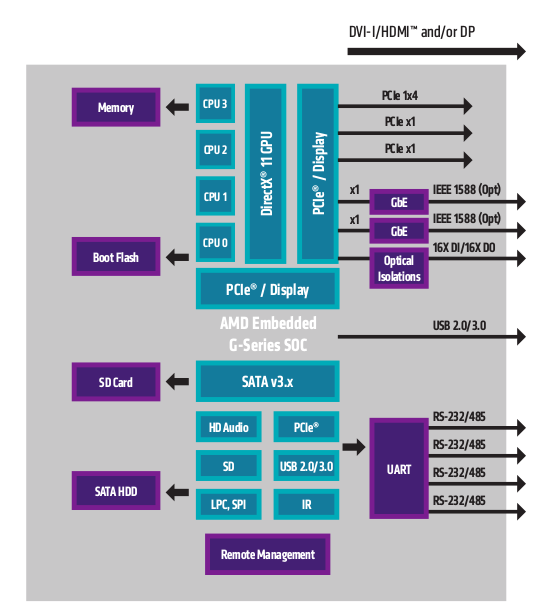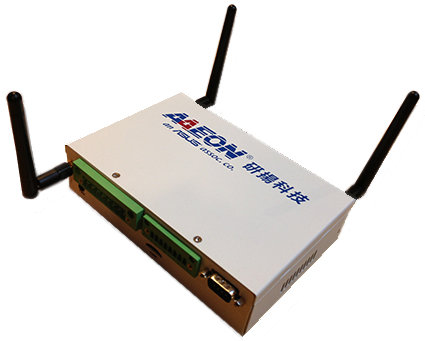QNAP has introduced their latest TS-x51 NAS family at Computex 2014 with four NAS supporting between 2 to 8 drives, expandable to a total of 16 drives via expansion enclosures. The storage devices powered by an Intel Celeron J1800 dual core processor boast video transcoding capability that’s 18 times faster than earlier Atom based solutions, feature an HDMI port, and support virtualization to allow you to run two operating systems such as Linux and Windows 8. QNAP TS-x51 specifications: SoC – Intel Celeron J1800 dual core processor @ 2.41 GHz (burst frequency: 2.58) with Intel HD graphics System Memory – 1GB SO-DIMM DDR3L-1333 or 4GB SO-DIMM DDR3L-1333 (Each model listed above has 1GB or 4GB RAM options), expandable to 8GB RAM via a second RAM slot Storage 512 MB flash (DOM – Disk On Module) Hot swappable 2.5″ or 3.5″ SATA drives @ 6Gb/s, 3Gb/s. Expansion enclosures – UX-800P, or UX-500P RAID […]
Intel Atom Z3580 MooreField SoC Shown to Outperform Qualcomm Snapdragon 801 in Graphics Benchmark
This is not exactly an independent benchmark, as Intel provided the results showing an Intel Atom Z3580 SoC with PowerVR G6430 @ 533 MHz outperform a Snapdragon 801 with Adreno 330 GPU @ 578 MHz (Galaxy S5) in FutureMark’s 3DMark benchmark by 20997 to 18144, or a little over 15%. We’ve seen several CPU benchmarks before where Intel often has a edge over ARM based solution, but the previous generation with Intel Graphics was a bit weak on the graphics side, and this test seems to confirm, the new Intel smartphone SoC should provide very good graphics performance. It appears Atom Z3580 might have also outperformed Snapdragon 805 with Adreno 420, as Anandtech reported an overall score of 19,698 in 3Dmarks with Qualcomm Snpadragon S805 mobile development platform (MDP), and noticed it was not the most GPU intensive test there is. So it’s still possible the higher score found on Intel’s […]
AMD Introduces Embedded G-Series “Steppe Eagle” SoCs and “Crowned Eagle” CPUs
AMD has added six new members to is Embedded G-Series family with “Steppe Eagle” SoCs comprising a CPU, GPU and I/O in a single chip, and “Crowned Eagle” CPUs that are not actually CPUs in the old sense, but SoCs comprised of a CPU and I/O chipset, and all of them also include AMD’s ARM based PSP (Platform Security Processor) built upon ARM TrustZone architecture. You may also remember AMD G-Series APUs which are comprised of a CPU and GPU, and connected to an external I/O chipset, but none of these were announced today. The six new AMD G-Series processors are as follows: “Steppe Eagle” SoCs: GX-424CC – Quad core @ 2.4 GHz with 2MB L2 cache, and a GPU @ 497MHz. DDR3-1866 support. TDP: 25W GX-412HC – Quad core @ 1.2 GHz with 2MB L2 cache, ad a GPU @ 300MHz. DDR3-1333 support. TDP: 7W GX-212JC – Dual core @ 1.2 GHz […]
Aaeon AIOT-X1000 Linux Gateway is Powered by an Intel Quark SoC
Intel Quark SoC for low power embedded devices has been seen on platforms designed by Intel themselves, such as Intel Galileo board or Edison wearable development kit, but I had not found Quark SoC in actual products until Aaeon announced their AIOT-X1000 gateway for the internet of things running Linux on an Intel Quark X1000 SoC, and working with a Cloud Service by Asus, Aaeon’s parent company. The solution targets manufacturing, transportation, and energy applications. Aaeon AIOT-X1000 specifications: Processor – Intel Quark X1000-series SoCs @ up to 400 MHz System Memory – 1GB DDR3 800/1066 SODIMM Storage – IDE port, and micro SD slot Connectivity – 10/100M Ethernet USB 4x USB2.0 ports Serial – 1x RS-232/422/485, 1x RS-422/485 Other I/Os — I2C, GPIO, JTAG Mini-PCIe card expansion – 1x full-size and 1x half-size, allowing for WiFi, 2G/3G/LTE cellular, Bluetooth, CAN bus, ZigBee, and RFID add-on boards Power – 5V or 9-24V DC input Dimensions – 146 x […]
Intel Showcases Tablet / 2-in-1 Reference Design based on 14nm “Broadwell” Core M SoC
Intel has unveiled a thin tablet reference design at Computex 2014, in Taiwan, which is based on their upcoming “Broadwell” Core M processor manufactured using 14nm process technology, which will be the most power efficient Intel Core processor to date. Intel fanless mobile PC reference design features a 7.2mm thick, 12.5″ tablet that weights 670 grams. You can also connect it to a media dock providing additional cooling allowing more performance, as well as a keyboard dock. Intel expects 2-in-1 products (tablet + laptop) based on Intel Core M to be available later this year. Intel claims 60% lower power dissipation, 20 to 40% better performance, and 10 to 45% low SoC power, and half the package footprint compared to third generation “Haswell” Core processors, which will allow fanless and thin designs. Currently Mobile Haswell Core processors have a maximum TDP of 11.5W to 47W, so in theory, at best, Broadwell SoCs might achieve […]







